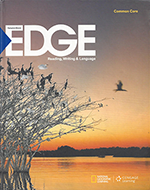
General English 9 builds upon the students' prior knowledge of grammar, vocabulary, word usage, and mechanics of writing, and usually include the four aspects of language use: reading, writing, speaking, and listening. Usually, the various genres of literature are introduced and defined, with writing exercises often linked to reading selections. Students also spend time developing grammar and language skills such as sentence structure, parts of speech, and editing strategies.
The class utilizes Edge Level B as well as supplemental nonfiction and fiction texts. Students are exposed to a balance of high-quality informational texts and literature. Informational texts include National Geographic articles, narrative nonfiction, expository texts, digital genres, and arguments. Literature selections include multicultural authors and characters, common core exemplars, contemporary literature, poems, plays, and classics. Within the General English 9 course, students will review and practice grammar and punctuation, develop vocabulary, practice different types of writing, and will read for information, fluency, and enjoyment. This course serves as the first step for students to develop key reading and writing skills that are critical for success in high school, university, and their future careers.
This course is aligned with Common Core English Language Arts Standards. The Common Core State Standards for English Language Arts & Literacy in History/Social Studies, Science, and Technical Subjects (“the Standards”) are the culmination of an extended, broad-based effort to fulfill the charge issued by the states to create the next generation of K–12 standards to help ensure that all students are college and career ready in literacy no later than the end of high school.
As specified by CCSSO and NGA, the Standards are (1) research and evidence based, (2) aligned with college and work expectations, (3) rigorous, and (4) internationally benchmarked. A particular standard was included in the document only when the best available evidence indicated that its mastery was essential for college and career readiness in a twenty-first-century, globally competitive society. The Standards are intended to be a living work: as new and better evidence emerges; the Standards will be revised accordingly.
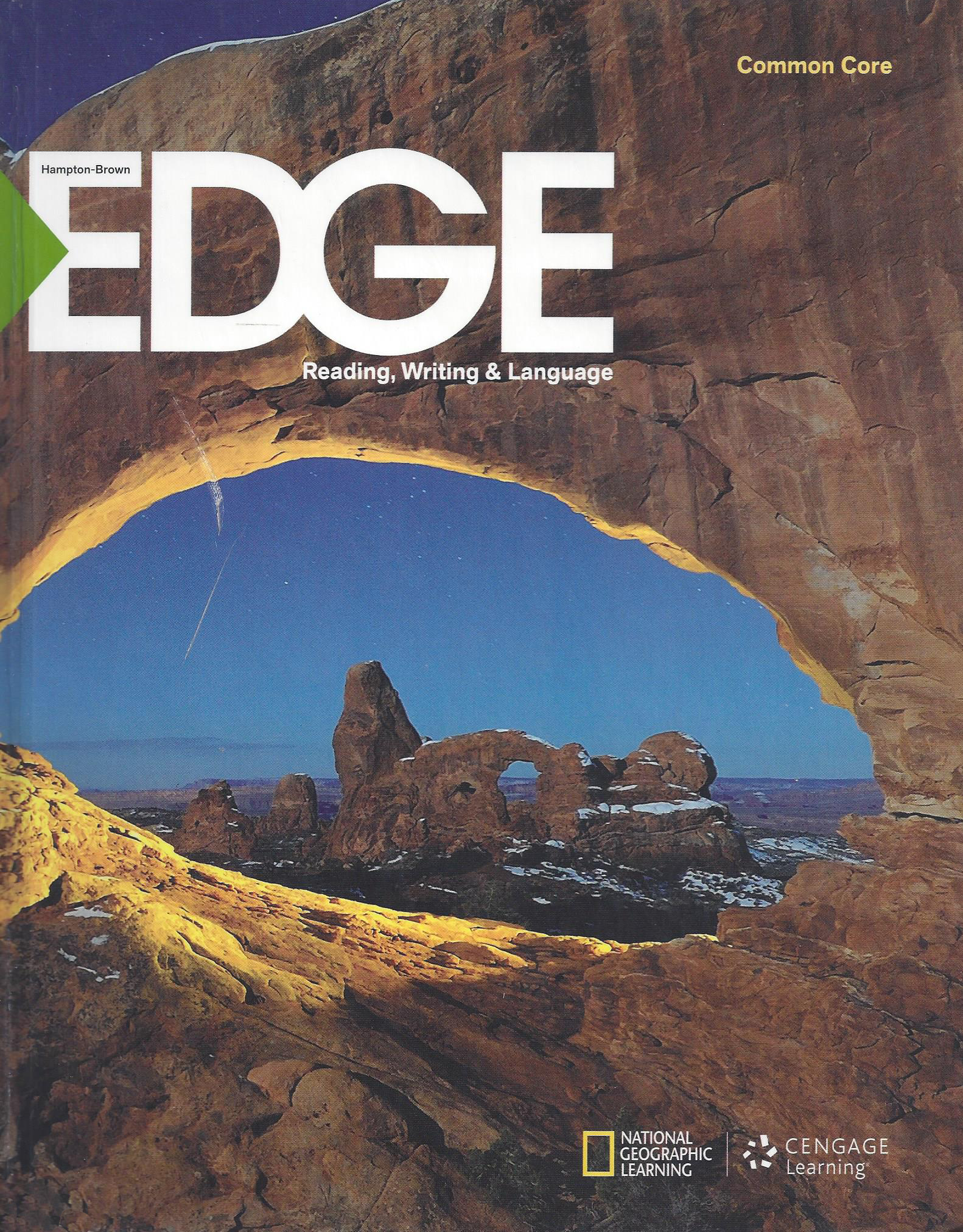
General English 10 offers a balanced focus on composition and literature. Typically, students learn about the alternate aims and audiences of written compositions by writing persuasive, critical, and creative multi-paragraph thematic essays and compositions. The study of literature encompasses various genres as students improve their reading rate and comprehension and develop the skills to determine authors' intent and theme and to recognize the techniques employed by the author to achieve the goal.
The class utilizes Edge Level C as well as supplemental nonfiction and fiction texts. General English 10 is a literature and composition course that focuses on fiction and non-fiction works, including informational texts (written and visual), poetry, novels, short stories, and dramatic works from American, British, and Chinese sources. Students study both literary works of merit along with everyday texts in advertising and media. The course will emphasize close-reading strategies, collaborative work, grammar, and extensive writing (journal entries, analytical essays, free-writing). Within the General English 10 course, students focus on continuing to build upon and master reading, writing, listening, speaking, and language skills in English. This course places emphasis on studying and analyzing classic literary masterpieces such as Romeo and Juliet and To Kill A Mockingbird.
This course is aligned with Common Core English Language Arts Standards. The Common Core State Standards for English Language Arts & Literacy in History/Social Studies, Science, and Technical Subjects (“the Standards”) are the culmination of an extended, broad-based effort to fulfill the charge issued by the states to create the next generation of K–12 standards to help ensure that all students are college and career ready in literacy no later than the end of high school.
As specified by CCSSO and NGA, the Standards are (1) research and evidence based, (2) aligned with college and work expectations, (3) rigorous, and (4) internationally benchmarked. A particular standard was included in the document only when the best available evidence indicated that its mastery was essential for college and career readiness in a twenty-first century, globally competitive society. The Standards are intended to be a living work: as new and better evidence emerges; the Standards will be revised accordingly.
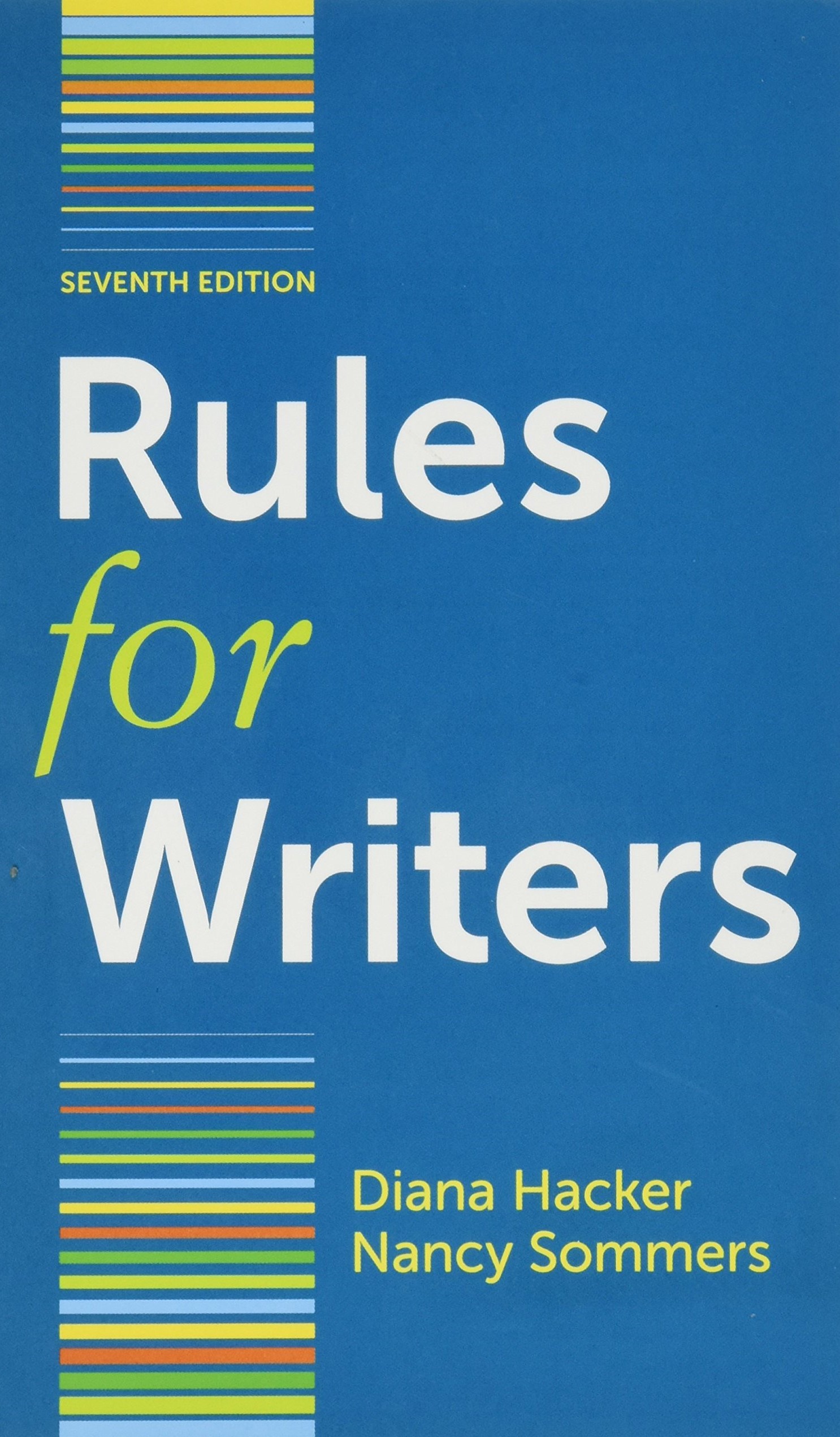
Creative writing is focused on allowing students to display their creative and expressive writing skills. Exercises and assignments in each of the main literary genres—creative nonfiction, poetry, fiction, and drama—will help students discover their voice and tone while expanding vocabulary, building awareness of audience, and refining flow, context, meaning, and sentence variation. Creative writing will promote critical thinking and help students refine communication skills, which will aid students in writing more interesting essays, enhance their success in other classes, and set them apart in college applications as they continue in the world of academia.
In this course, students learn a variety of skills like how to plot an original fiction story, complete with the different elements. They use and distinguish significant details that will enhance the flow and engagement in the story. After this course, students will be able to form their opinions and insights to different written work and write insightful revisions that will make a significant change in their work. Reading with a writer's sensibility helps student further understand the literary work. Additionally, students compose original stories and poems that will provide a boost to their creativity, discuss poetry and prose with the language of the discipline, and write stories and scripts in different genre.
This course is aligned with Common Core English Language Arts Standards. The Common Core State Standards for English Language Arts & Literacy in History/Social Studies, Science, and Technical Subjects (“the Standards”) are the culmination of an extended, broad-based effort to fulfill the charge issued by the states to create the next generation of K–12 standards to help ensure that all students are college and career ready in literacy no later than the end of high school.
As specified by CCSSO and NGA, the Standards are (1) research and evidence based, (2) aligned with college and work expectations, (3) rigorous, and (4) internationally benchmarked. A particular standard was included in the document only when the best available evidence indicated that its mastery was essential for college and career readiness in a twenty-first-century, globally competitive society. The Standards are intended to be a living work: as new and better evidence emerges; the Standards will be revised accordingly.
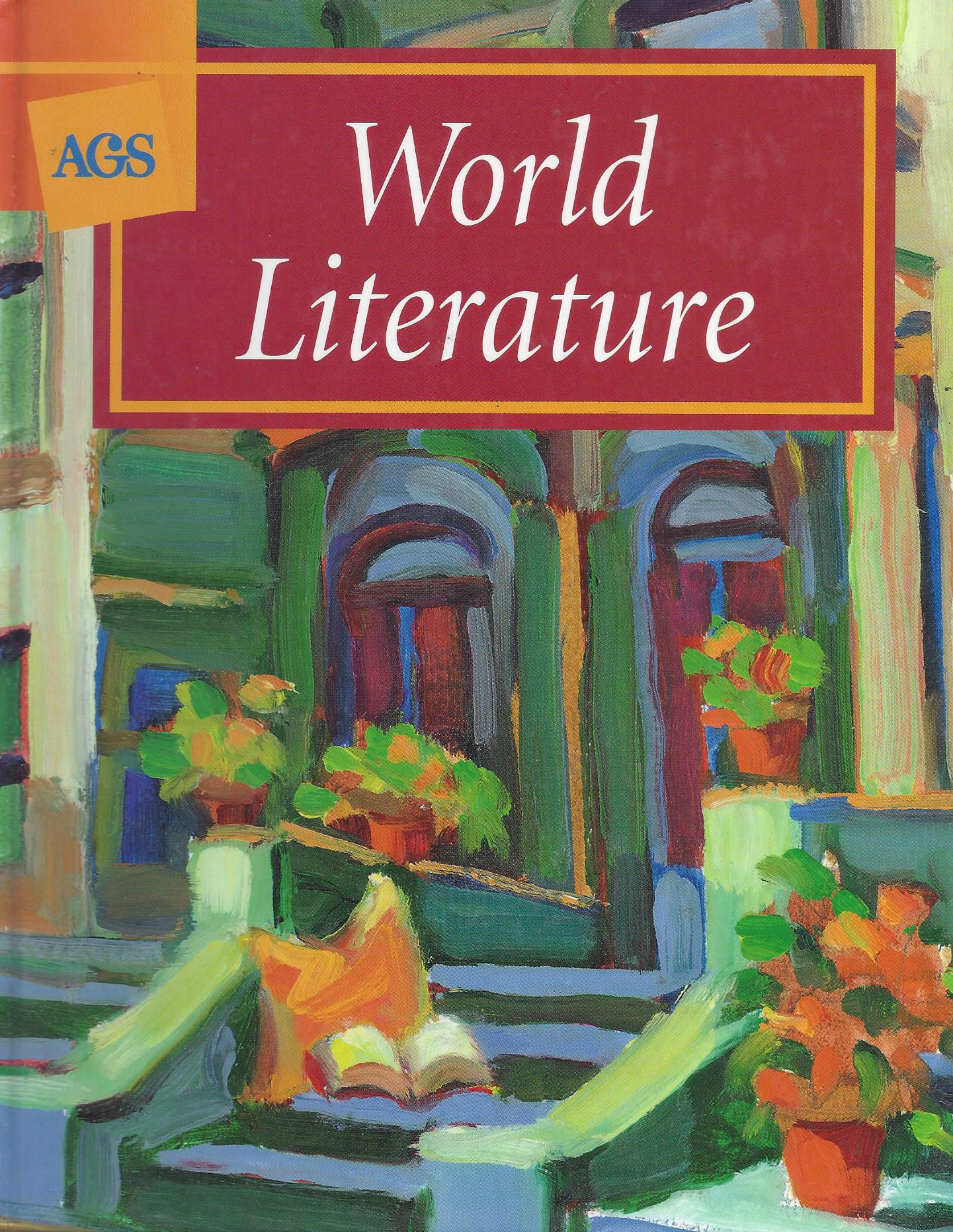
World Literature is a year-long study of canonical literature spanning the globe. In this course, students will examine short stories, novels, plays, poetry, and nonfiction within a historical and cultural context. Students take part in group discussions and class seminars, write essays, and deliver speeches to demonstrate their growing understanding of the relationship between local concerns and universal questions, the manner in which geography and culture can influence form, and world views of literature itself. Class discussions also encourage students to express opinions and support individual ideas from their readings.
The course places an emphasis on literature form different cultures and writing traditions from the earliest work of literature, The Epic of Gilgamesh, to present day writers. Other works include novels, poems, short stories, essays, biographies, and memoirs from around the world. Additionally, students make connections from the literature to their own lives. In this course, students are expected to demonstrate and improve both their creative and analytical writing skills as well as perform research about a topic. Vocabulary development is also a key factor for success in this course.
This course is aligned with Common Core English Language Arts Standards. The Common Core State Standards for English Language Arts & Literacy in History/Social Studies, Science, and Technical Subjects (“the Standards”) are the culmination of an extended, broad-based effort to fulfill the charge issued by the states to create the next generation of K–12 standards to help ensure that all students are college and career ready in literacy no later than the end of high school.
As specified by CCSSO and NGA, the Standards are (1) research and evidence based, (2) aligned with college and work expectations, (3) rigorous, and (4) internationally benchmarked. A particular standard was included in the document only when the best available evidence indicated that its mastery was essential for college and career readiness in a twenty-first-century, globally competitive society. The Standards are intended to be a living work: as new and better evidence emerges; the Standards will be revised accordingly.
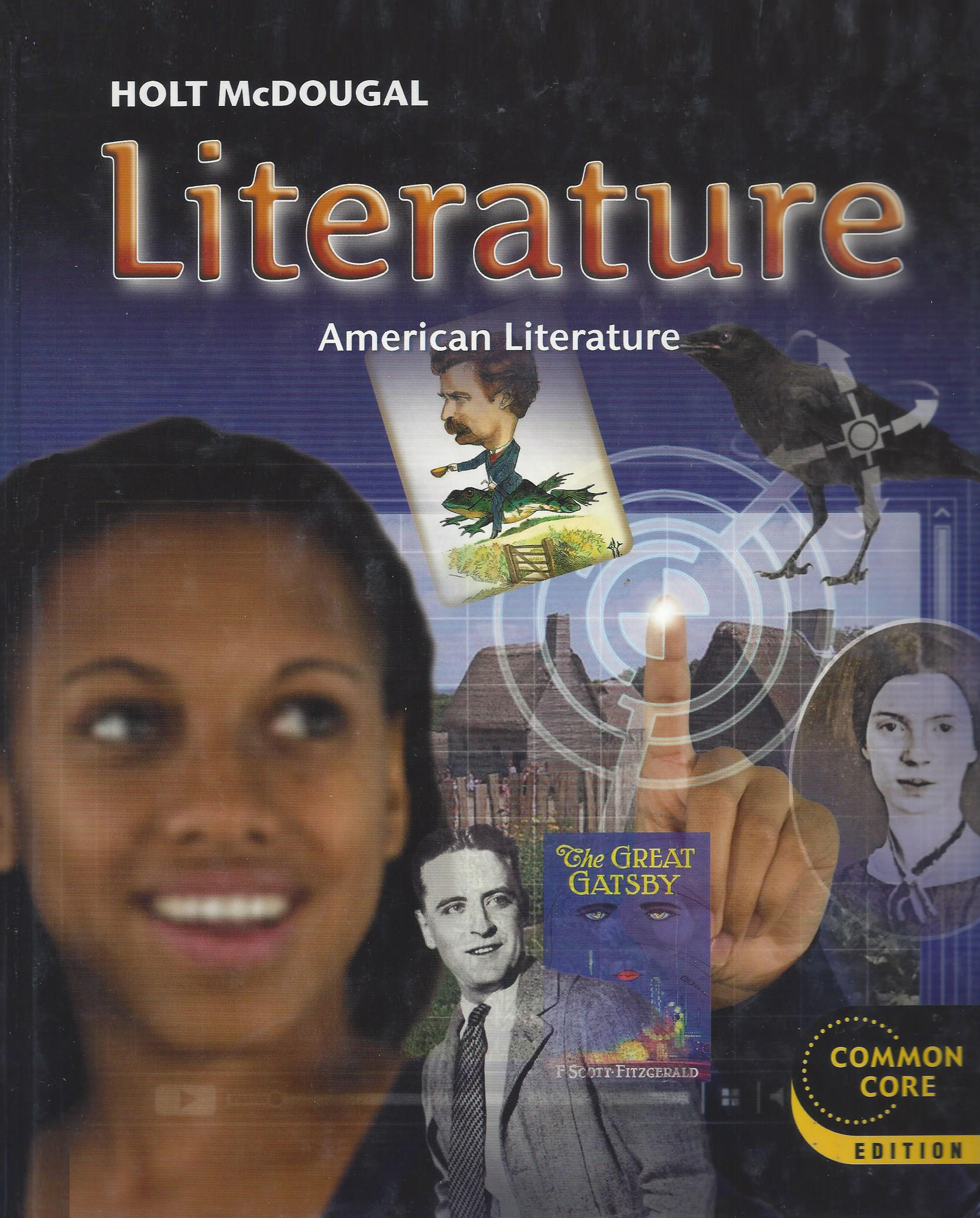
American Literature covers the literature of the United States from the early beginnings of the country until the present. Historical forces impacting the literature, as well as the regional influences, are also examined. The development of critical thinking and vocabulary building, along with writing skills, are emphasized. This survey course in American Literature covers the period from the 17th century to the present. It focuses on the various histories and cultures of American writers, including Native American, Asian-American, African-American, and European-American authors of fiction and non-fiction texts, or imaginative literature and informational texts. The course, moreover, will emphasize mastering the literacy and grammar skills necessary to succeed in English-speaking universities. Therefore, reading, writing, speaking, and listening will be the four pillars of our learning.
The course covers a wide-range of selections including: short stories, novel excerpts, folk literature, poetry, drama, aphorisms, memoirs, essays, historical documents, historical narratives, explanatory texts, journalism, letters, diaries, speeches, sermons, and interviews. Additionally, the course features a variety of workshops: technology, writing, text analysis, speaking, and listening. Students are also expected to write to synthesize, evaluate, analyze, persuade, reflect, and compare.
This course is aligned with Common Core English Language Arts Standards. The Common Core State Standards for English Language Arts & Literacy in History/Social Studies, Science, and Technical Subjects (“the Standards”) are the culmination of an extended, broad-based effort to fulfill the charge issued by the states to create the next generation of K–12 standards to help ensure that all students are college and career ready in literacy no later than the end of high school.
As specified by CCSSO and NGA, the Standards are (1) research and evidence based, (2) aligned with college and work expectations, (3) rigorous, and (4) internationally benchmarked. A particular standard was included in the document only when the best available evidence indicated that its mastery was essential for college and career readiness in a twenty-first-century, globally competitive society. The Standards are intended to be a living work: as new and better evidence emerges; the Standards will be revised accordingly.
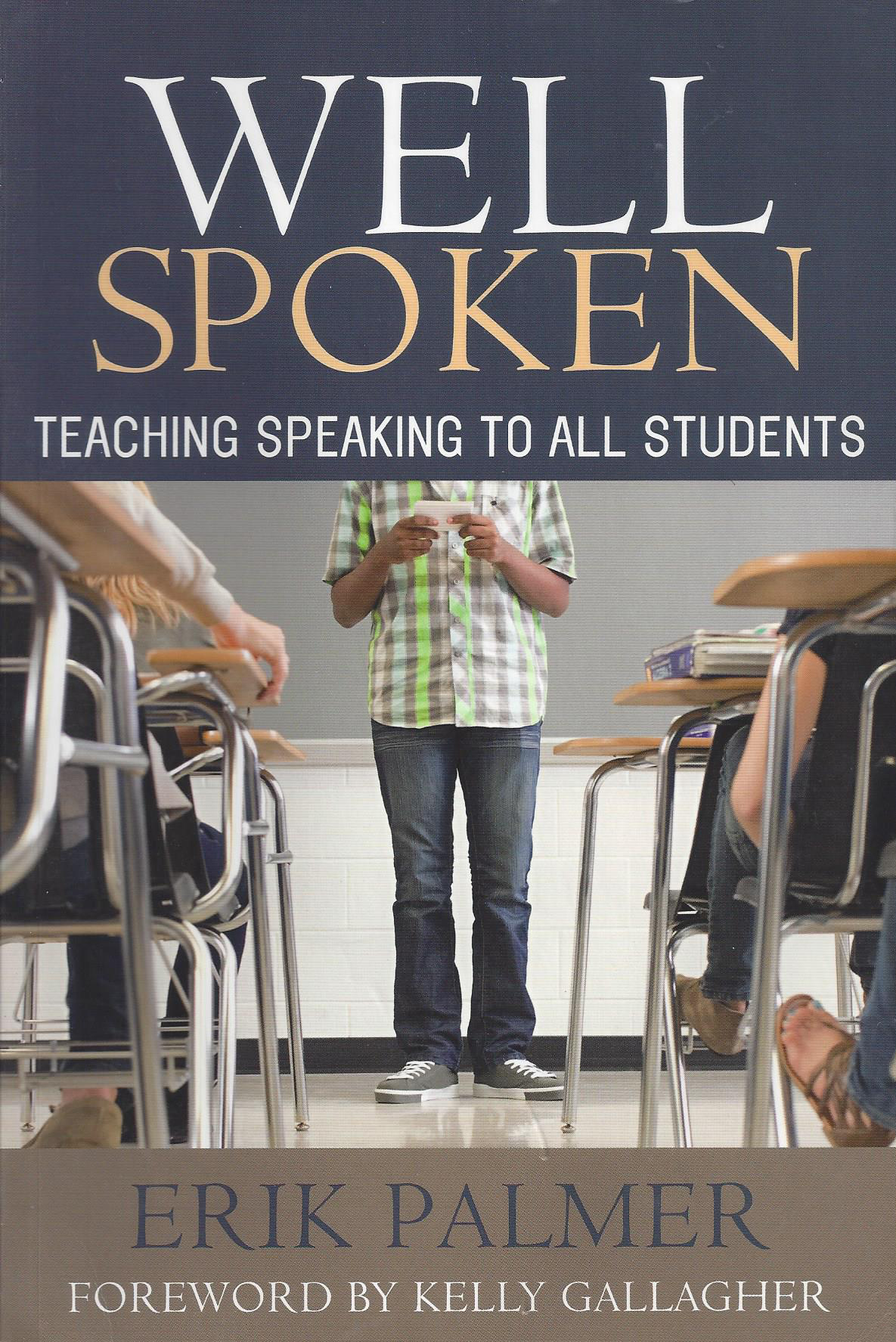
The primary purpose of Speech is to improve public speaking skills in a variety of settings. For each speech, topic selection, audience analysis, research, outlining, speech writing, and speech delivery will be emphasized. By the end of this course, students will have improved verbal and nonverbal communication skills and will be able to successfully and confidently present speeches in a variety of real-world situations. Speech transcends conversation. There is far more gravitas to a speech. Speeches can be memorable for all the right or wrong reasons. Most people experience speech highs and lows in their lifetimes. Speech requires content and delivery, but a variety of other considerations can deeply impact the efficacy of speeches. Effective speeches can move masses for both good and bad reasons. Truly great speeches can become legend.
In this course, students dive into discussion, debates, and various speeches in covering four units over the course of the semester. The class is guided by two essential questions. What makes a speech effective? How do speakers create speeches to fit certain situations? By completing this course, students will be a bel to identify the different parts of the communication process, define communication in the 21st century global community, the proper body language techniques to be used when giving a speech, the most effective way to persuade an audience when giving a speech, and the best way to properly deliver a speech vocally.
This course is aligned with Common Core English Language Arts Standards. The Common Core State Standards for English Language Arts & Literacy in History/Social Studies, Science, and Technical Subjects (“the Standards”) are the culmination of an extended, broad-based effort to fulfill the charge issued by the states to create the next generation of K–12 standards to help ensure that all students are college and career ready in literacy no later than the end of high school.
As specified by CCSSO and NGA, the Standards are (1) research and evidence based, (2) aligned with college and work expectations, (3) rigorous, and (4) internationally benchmarked. A particular standard was included in the document only when the best available evidence indicated that its mastery was essential for college and career readiness in a twenty-first-century, globally competitive society. The Standards are intended to be a living work: as new and better evidence emerges; the Standards will be revised accordingly.
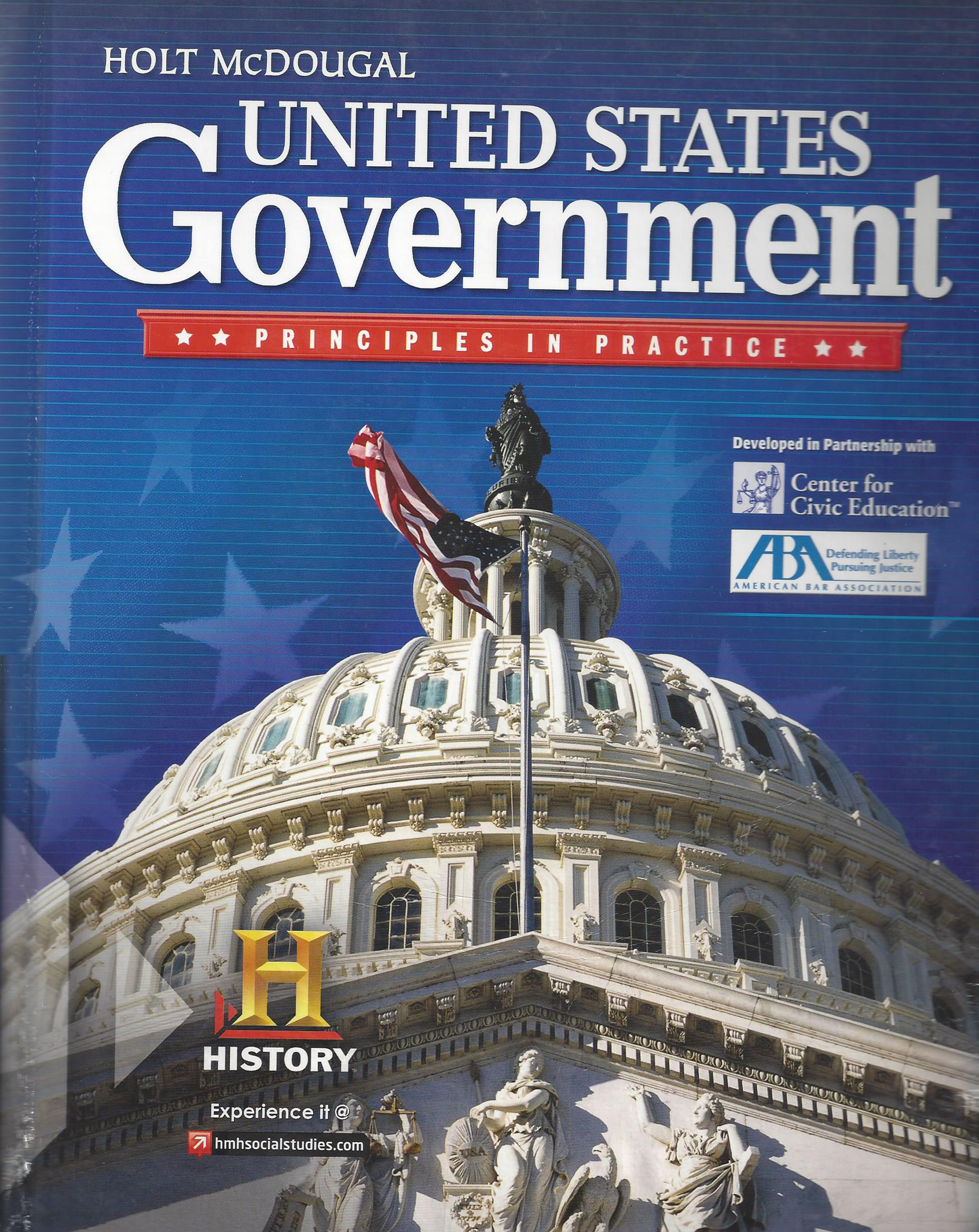
This course is designed to introduce students to the basic structure of the US government and how each student can participate in government, whether in the US or abroad. The course will cover the Constitutional underpinnings of the origins of US government; the political beliefs and values that support American government; our civil rights and civil liberties; and the role that political parties, interest groups, political institutions, and the media play in forming political decisions. Furthermore, discussions will be made over core American values of equality, liberty, and self-government through a variety of projects that will give students a first-hand look at how change is made through established political systems.
At the conclusion of this course, students will be able to describe all of the primary functions of the US government, understand the role of each branch of government, apply the functions of each branch of government to real-life historical events, and have a basis of understanding for the operation of the federal and state governments.
This course is aligned with Common Core English Language Arts Standards. The Common Core State Standards for English Language Arts & Literacy in History/Social Studies, Science, and Technical Subjects (“the Standards”) are the culmination of an extended, broad-based effort to fulfill the charge issued by the states to create the next generation of K–12 standards to help ensure that all students are college and career ready in literacy no later than the end of high school. The course is also aligned with the AERO Standards for Social Studies. Though not the first organization to produce social studies standards and benchmarks, Project AERO reflects its special mission: supporting schools around the world that are (1) independent and (2) international while, simultaneously, serving (typically) a largely American student population. Because the schools AERO seeks to serve are independent, their practices vary widely. Any set of standards and benchmarks that would be meaningful to these schools have to be sufficiently flexible to appeal to a diverse group of schools with widely different histories, geographic locations, cultural traditions, and student bodies. As a result, the original Project AERO Social Studies authors believed that the benchmarks had to be largely free of historically specific information.
As specified by CCSSO and NGA, the Standards are (1) research and evidence based, (2) aligned with college and work expectations, (3) rigorous, and (4) internationally benchmarked. A particular standard was included in the document only when the best available evidence indicated that its mastery was essential for college and career readiness in a twenty-first-century, globally competitive society. The Standards are intended to be a living work: as new and better evidence emerges; the Standards will be revised accordingly.
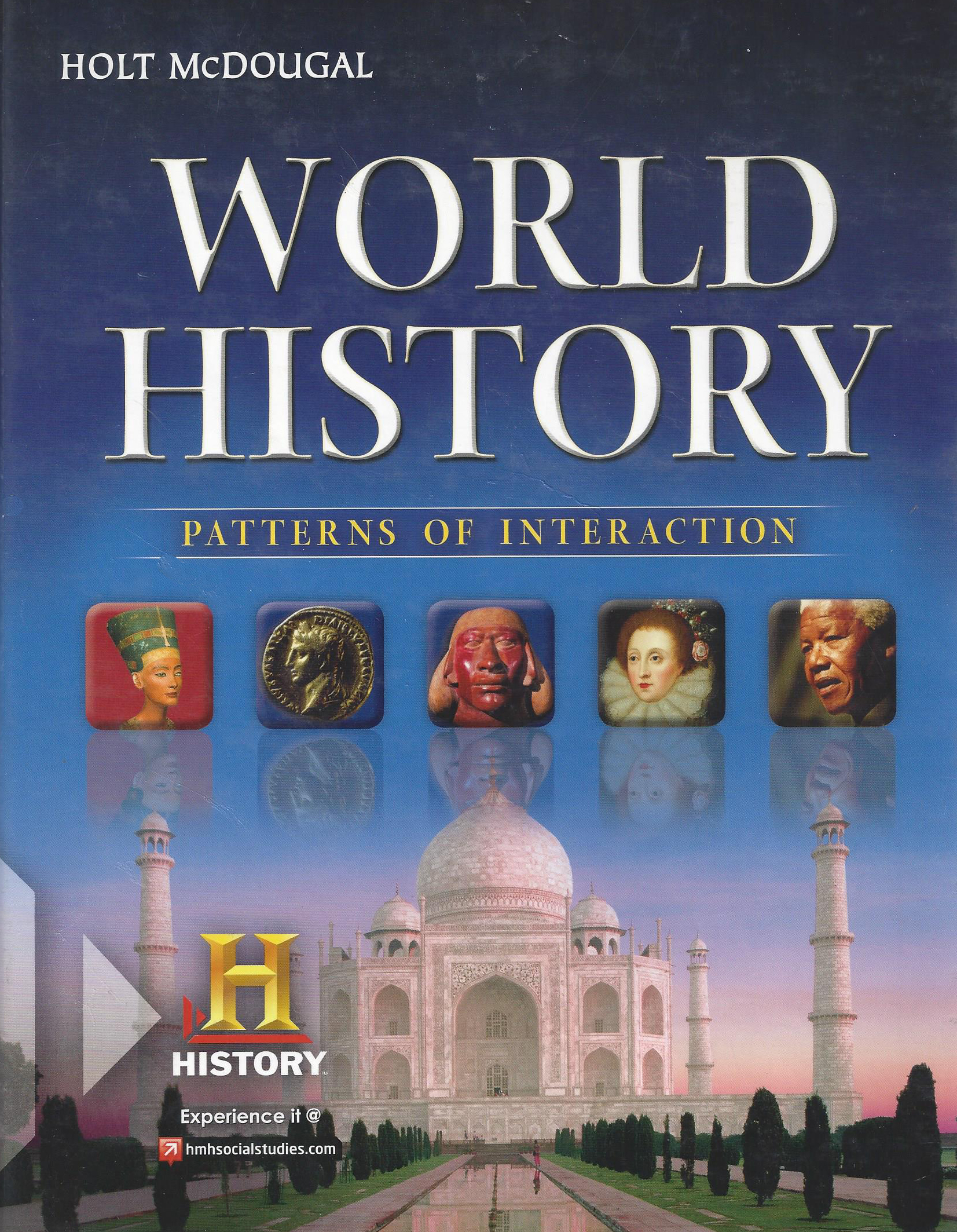
This course is a survey of world events from the early beginnings of civilization over 3 million years ago through the modern world. Themes addressed in every unit include those geography, economics, government, citizenship, culture, science, and technology. Examples of important concepts such as the development of Constitutionalism and Global Relations are examined. A variety of methods will be used to measure student learning, including quizzes, tests, analysis of primary source documents, research projects and group activities.
The class utilizes World History as well as supplementary digital resources. The students are exposed to past civilizations and cultures that will introduce them to a new perspective while analyzing their own. Students begin with a focus on the beginning and development of the first civilizations during the Stone Age and Indus River Valley Situations. The class focuses on the rise and spread of cultural traits all over the world. Relationships between people and their natural environment and the way this interaction shaped their various civilizations will be examined.
Additionally, students look at various kinds of specific evidence relating to different cultures and time periods and consider how to use that evidence to develop the meaningful statements and ideas of the cultures in question. Students gain an appreciate of both the past and current world throughout this course.
This course will align with the AERO Standards for Social Studies. Though not the first organization to produce social studies standards and benchmarks, Project AERO reflects its special mission: supporting schools around the world that are (1) independent and (2) international while, simultaneously, serving (typically) a largely American student population. Because the schools AERO seeks to serve are independent, their practices vary widely. Any set of standards and benchmarks that would be meaningful to these schools have to be sufficiently flexible to appeal to a diverse group of schools with widely different histories, geographic locations, cultural traditions, and student bodies. As a result, the original Project AERO Social Studies authors believed that the benchmarks had to be largely free of historically specific information.
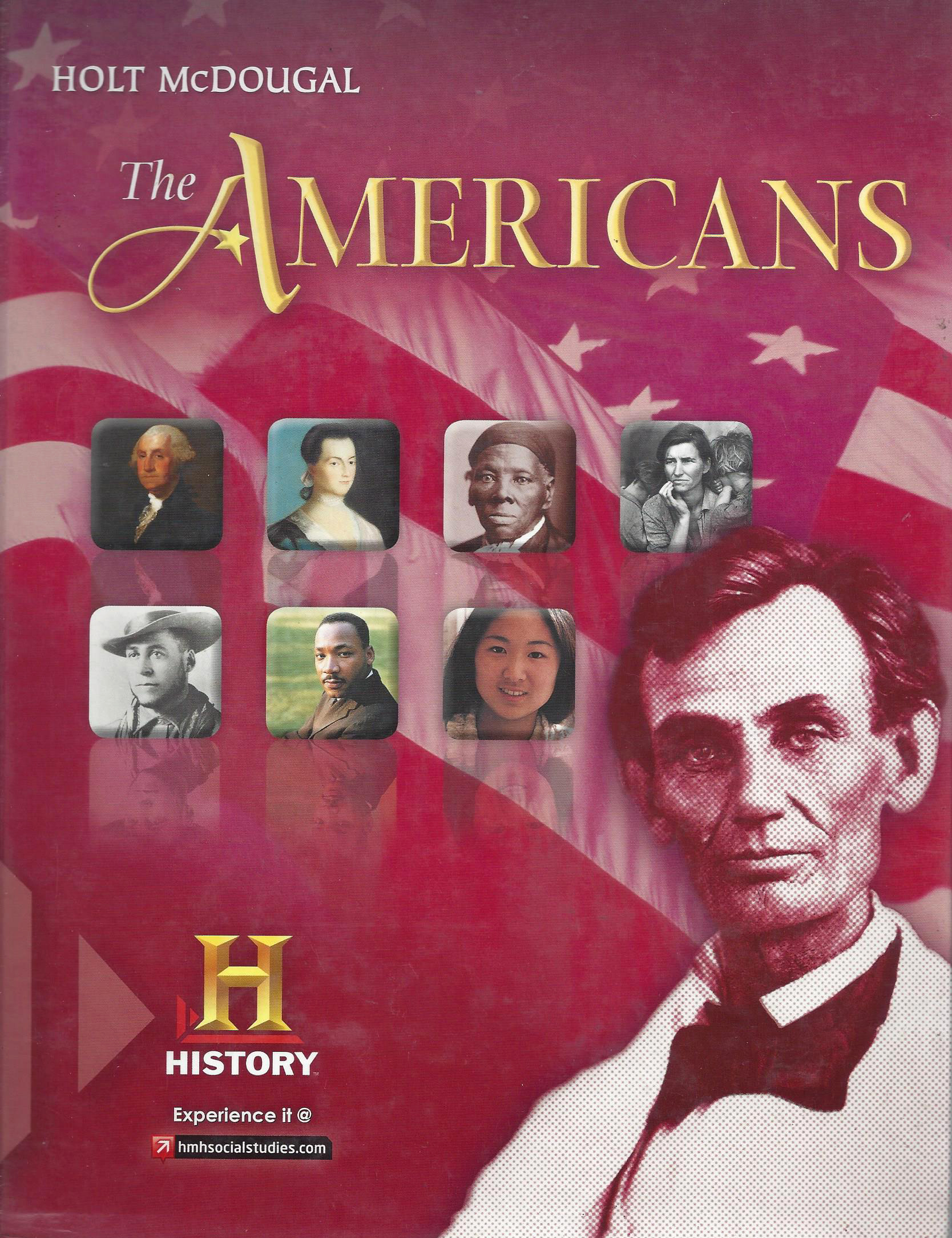
U.S. History is a year-long course intended to provide the student with a basic understanding of the political, economic, military, and social history of the United States of America. We will cover key events in US History through eight themes revolving around the core American values of Equality, Liberty, Self-Government, and Free Enterprise. The course begins with the earliest history of North America and continues with a variety of conflicts and encounters between groups of people, and events through examining how modern-day American culture has been influenced by its history. The course will build students' skills in reading, writing, speaking, and listening in English, as well as academic skills in research and historical investigation.
The class utilizes The Americans as well as supplementary digital resources. The students are exposed to past and cultures of the United States that will introduce them to a new perspective while analyzing their own. The course is designed for students to improve their English ability while gaining an understanding of American history and culture. The students’ own culture is used as a comparison tool throughout the course.
Additionally, students will study the origins of the country, the mistakes and successes in its development, and Americas potential role in the future. The goal is for students to learn from America’s trials and tribulations and apply the learned material to make educated decisions in the future.
This course will align with the AERO Standards for Social Studies. Though not the first organization to produce social studies standards and benchmarks, Project AERO reflects its special mission: supporting schools around the world that are (1) independent and (2) international while, simultaneously, serving (typically) a largely American student population. Because the schools AERO seeks to serve are independent, their practices vary widely. Any set of standards and benchmarks that would be meaningful to these schools have to be sufficiently flexible to appeal to a diverse group of schools with widely different histories, geographic locations, cultural traditions, and student bodies. As a result, the original Project AERO Social Studies authors believed that the benchmarks had to be largely free of historically specific information.
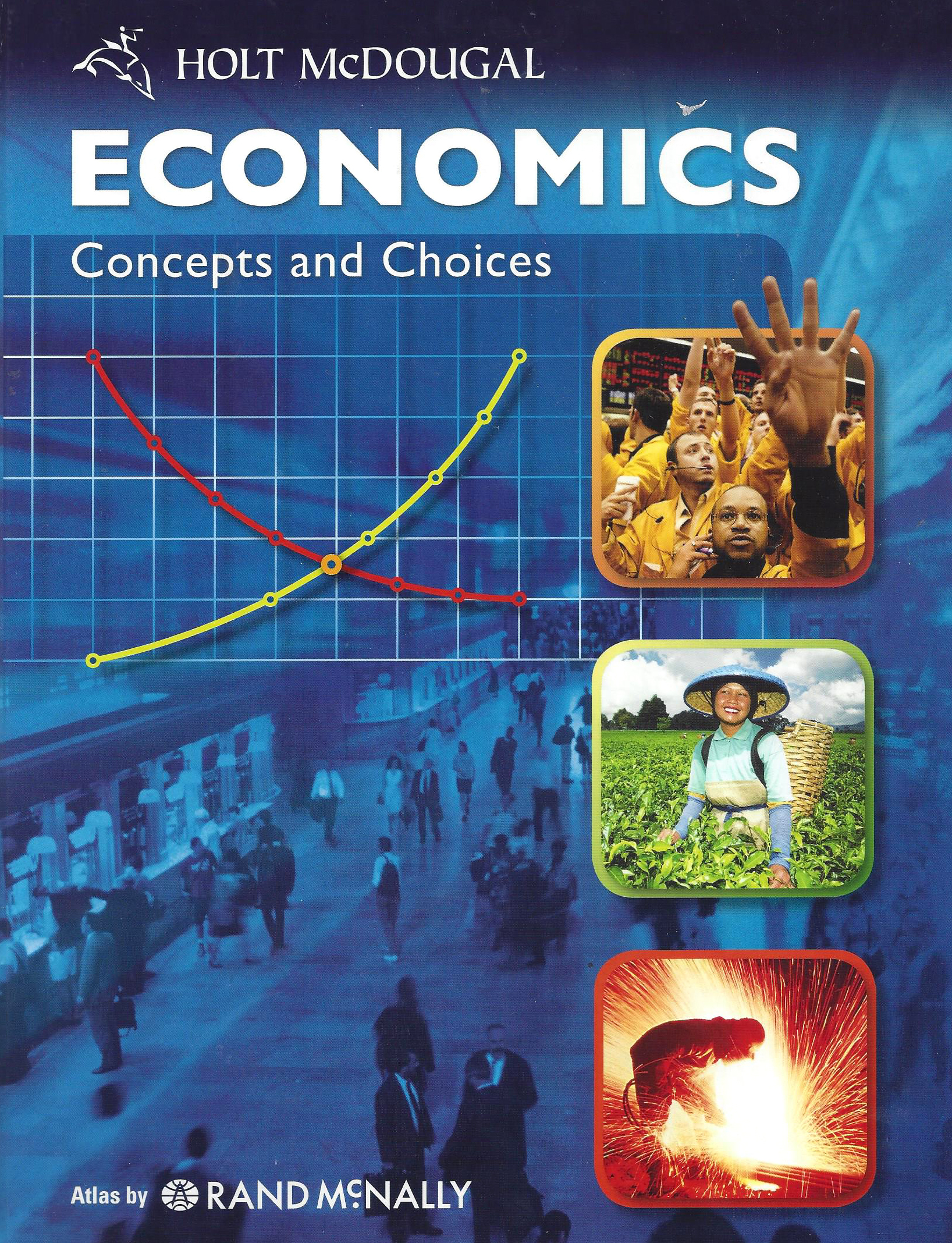
This class is an introduction to economics. The course will be split into two sections. The first section focuses on microeconomics. We will cover economic systems, market structures, and the roles of government, consumers, and producers in these systems. The second section focuses on macroeconomics. We will cover money and banking, government intervention, financial markets, and international trade. Upon completing these two sections, students will be empowered to understand and help correct societal problems.
Students will understand that resources are limited, and that the primary economic problem is the allocation of scarce resources to satisfy unlimited wants. Students will understand the effects of competition, or lack thereof, on prices and other economic factors. Students will understand the basic components of international trade and the implications of free trade on employment, domestic production, and international production.
This course is aligned with Common Core English Language Arts Standards. The Common Core State Standards for English Language Arts & Literacy in History/Social Studies, Science, and Technical Subjects (“the Standards”) are the culmination of an extended, broad-based effort to fulfill the charge issued by the states to create the next generation of K–12 standards in order to help ensure that all students are college and career ready in literacy no later than the end of high school.
Additionally, this course will be aligned with Common Core Mathematics Standards. These Standards define what students should understand and be able to do in their study of mathematics. Asking a student to understand something means asking a teacher to assess whether the student has understood it. But what does mathematical understanding look like? One hallmark of mathematical understanding is the ability to justify, in a way appropriate to the student’s mathematical maturity, why a particular mathematical statement is true or where a mathematical rule comes from. There is a world of difference between a student who can summon a mnemonic device to expand a product such as (a + b)(x + y) and a student who can explain where the mnemonic comes from. The student who can explain the rule understands the mathematics, and may have a better chance to succeed at a less familiar task such as expanding (a + b + c)(x + y). Mathematical understanding and procedural skill are equally important, and both are assessable using mathematical tasks of sufficient richness.
